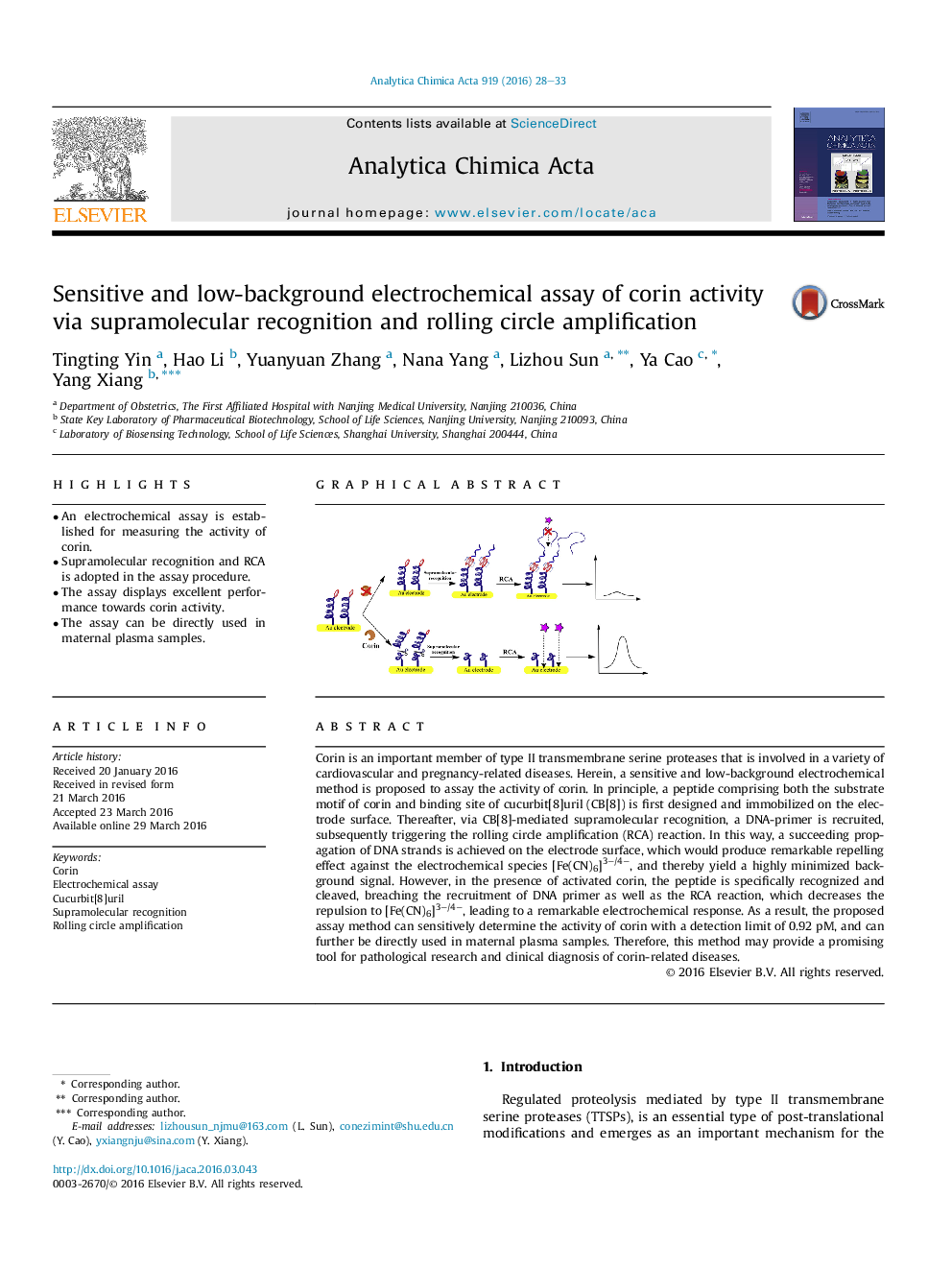| Article ID | Journal | Published Year | Pages | File Type |
|---|---|---|---|---|
| 1162875 | Analytica Chimica Acta | 2016 | 6 Pages |
•An electrochemical assay is established for measuring the activity of corin.•Supramolecular recognition and RCA is adopted in the assay procedure.•The assay displays excellent performance towards corin activity.•The assay can be directly used in maternal plasma samples.
Corin is an important member of type II transmembrane serine proteases that is involved in a variety of cardiovascular and pregnancy-related diseases. Herein, a sensitive and low-background electrochemical method is proposed to assay the activity of corin. In principle, a peptide comprising both the substrate motif of corin and binding site of cucurbit[8]uril (CB[8]) is first designed and immobilized on the electrode surface. Thereafter, via CB[8]-mediated supramolecular recognition, a DNA-primer is recruited, subsequently triggering the rolling circle amplification (RCA) reaction. In this way, a succeeding propagation of DNA strands is achieved on the electrode surface, which would produce remarkable repelling effect against the electrochemical species [Fe(CN)6]3−/4−, and thereby yield a highly minimized background signal. However, in the presence of activated corin, the peptide is specifically recognized and cleaved, breaching the recruitment of DNA primer as well as the RCA reaction, which decreases the repulsion to [Fe(CN)6]3−/4−, leading to a remarkable electrochemical response. As a result, the proposed assay method can sensitively determine the activity of corin with a detection limit of 0.92 pM, and can further be directly used in maternal plasma samples. Therefore, this method may provide a promising tool for pathological research and clinical diagnosis of corin-related diseases.
Graphical abstractFigure optionsDownload full-size imageDownload as PowerPoint slide
